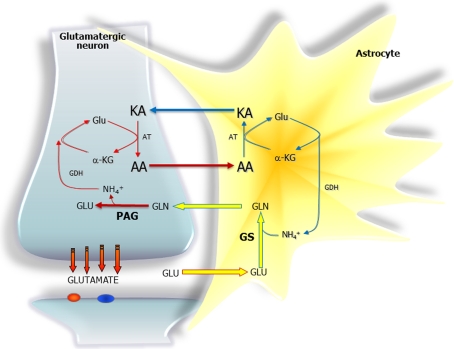Figure 2. Schematic representations of the proposed amino acid (AA) shuttles at the glutamatergic synapse involved in the return of ammonia generated in neurons when the glutamate-glutamine cycle is running.
In the lactate–alanine shuttle the amino acid (AA) is alanine and the ammonia produced in neurons is fixed into α-KG by the GDH reaction to form glutamate, then transaminated by alanine aminotransferase into the KA (keto-acid) pyruvate to form alanine which is exported to astrocytes. In the astrocytes this process is then reversed, and pyruvate is transported in the other direction (it is likely that pyruvate may be converted to lactate for the transfer process to occur). In the branched-chain AA shuttle the AA is a branched-chain AA such as leucine. Here, the ammonia fixed in the GDH reaction in the neurons is transaminated into the KA (keto-acid) α-ketoisocaproate to form leucine, which is exported to astrocytes. In the astrocytes, the process is reversed, i.e. α-ketoisocaproate is transported in the other direction. Abbreviations: Glc, glucose; Gln, glutamine; Glu, glutamate.

